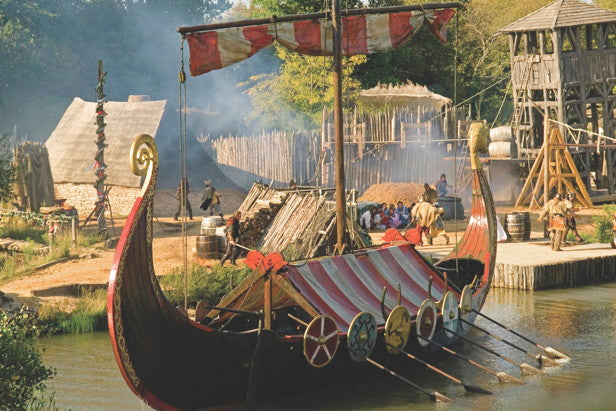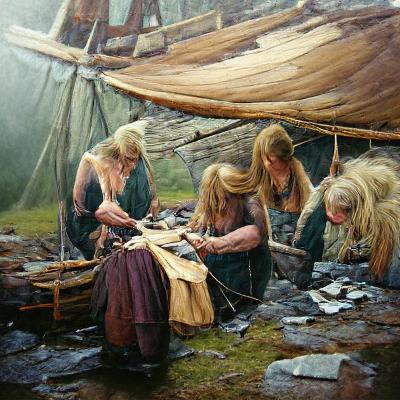The Viking era and all its glorious information are always under fire for its mythological facts and accuracy as to what things are true and which are exaggerated. It may do the readers well to know who the Vikings were and and some preliminary information before they get to the nitty gritty of debates.
Visit Denmark sums them up nicely by explaining, "The Vikings, or "Vikingr" in Old Norse, is the collective term used to describe the Scandinavian explorers, traders and warriors who raided, traded, explored and settled across large parts of Europe, Asia and the North Atlantic islands from around the eighth to the middle of the eleventh century.
Vikings were feared for their famous long ships, impressive vessels that allowed Vikings not only to traverse oceans but also navigate through shallow waters and even land straight on beaches. During the Viking Age, Norsemen travelled far and wide across what was then the known world. Contrary to popular belief, Vikings did not only engage in raiding and pillaging. They were also adept traders, and established many successful settlements in England, Scotland, Ireland, Normandy and Iceland."
The more important part is what people say that are attributed to the vikings that may or may not be true, here are some of these debunked ideas.
Countless misconceptions of the Vikings exist and continue to be perpetuated today. Here are some of the more well-known Viking myths that have no grounding in historical fact:
- Vikings did not wear horned helmets. There is no evidence to suggest that they ever did, apart from in some ritual ceremonies. Having horned helmets would seriously impede your ability to fight effectively in close combat. Viking helmets were in fact conical, made from hard leather with wood and metallic reinforcement, or made in iron with a mask and chain mail. The idea of Vikings wearing horned helmets arose during the 19th century.
- Vikings were not simply savage brutes. Images of wild-haired, wild-eyed raiders are how the Vikings were mythologised. In fact, the Anglo-Danes occupying parts of Great Britain were described as excessively clean by their Anglo-Saxon neighbors, as they insisted on bathing at least once a week and kept their hair well-groomed.
- Vikings did not play the lyre.
- Vikings were not typically buried in a dolmen.
Ray Doug has some bigger ones that came to light recently such as the real Norse mythology being weirder than what were see in comics or movies.

he states that, "Through the Marvel comics and movies, a new generation of people from around the world have be introduced to Norse mythological figures like Thor, Loki, Odin and Surtr. The stories of Thor and his in the superhero universe are some of the most far out, but the actual mythology is often even weirder. Loki, for example, depending on the retelling, is father to, among others, a giant wolf and a serpent that encircles the Earth in addition to being the mother to an eight-legged horse. You’ve probably at some point or another had a friend express, perhaps in jest, that when they die, they would like to be buried like a Viking and set adrift in a flaming ship floating gently towards out to sea. Vikings had a variety of funerary rituals that would differ depending on factors such as status in society, gender, age and more. Viking ships were expensive and time consuming to produce and so, it was not at all a common practice to send corpses out to sea in flaming boats. More often, the Norse would either bury their dead in large burial mounds with a cache of their possessions (and, rarely, even with a ship to help ferry their spirit to the afterlife) or the corpses were cremated in funeral pyres."

The general consensus is that most mythological accuracy on Vikings is still being learned and found almost as much as the information is to be sorted and we are one of those that strive to correct misinformation at the source if possible.
WORKS CITED
1.“7 Misconceptions about the Vikings That Might Surprise You.” The Franklin Institute, 9 July 2019, https://www.fi.edu/blog/viking-misconceptions.
2. “Facts and Myths about Denmark's Vikings.” VisitDenmark, https://www.visitdenmark.com/denmark/things-do/history-and-culture/vikings-facts-and-myths.
-
-
-







Leave a comment
This site is protected by hCaptcha and the hCaptcha Privacy Policy and Terms of Service apply.